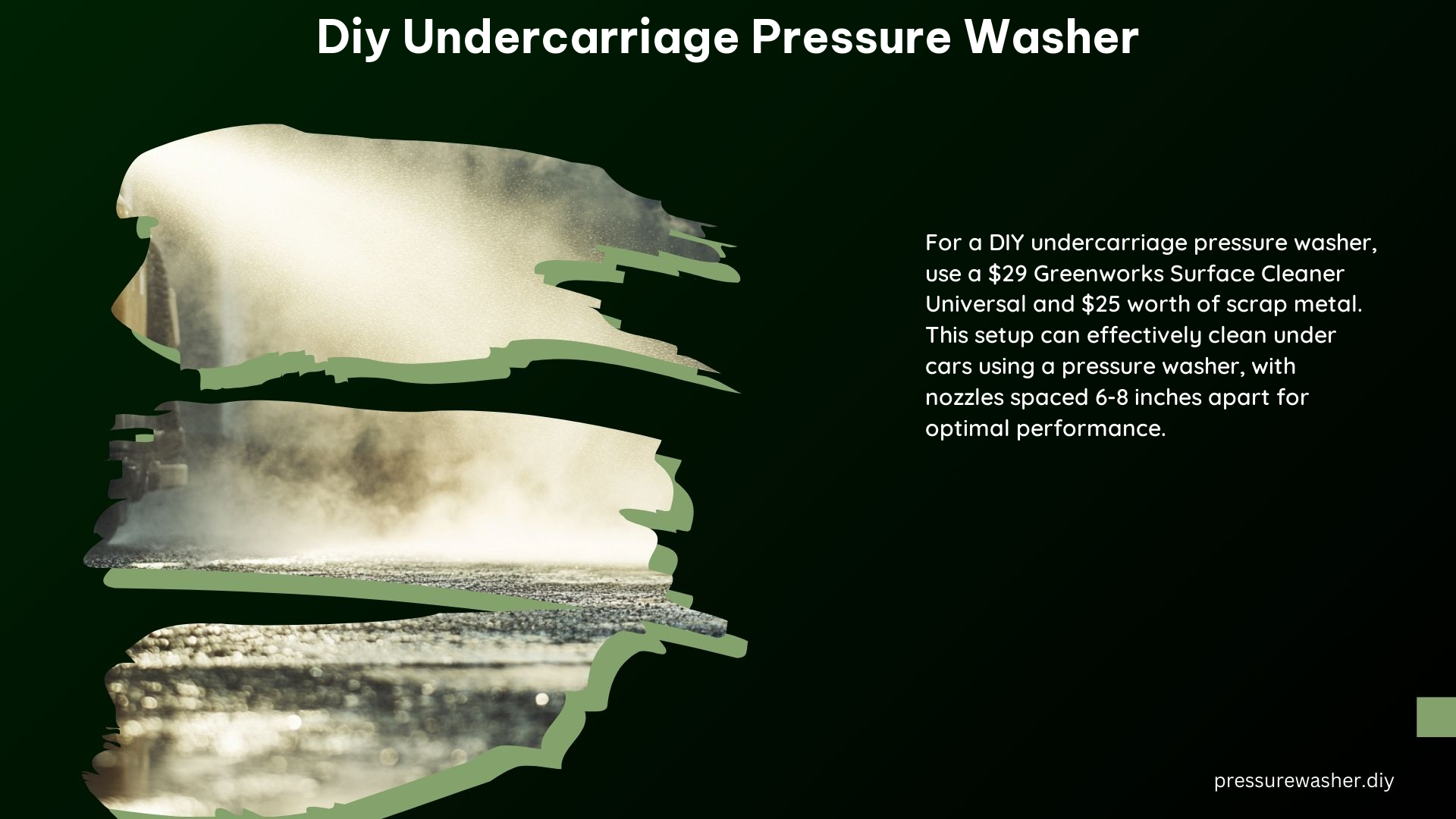Creating a DIY undercarriage pressure washer is a cost-effective and efficient way to clean the underside of your vehicle. This comprehensive guide will walk you through the essential components, step-by-step instructions, safety precautions, and technical specifications to help you build your own high-performance undercarriage pressure washer.
Essential Components
PVC Pipe and Fittings
- PVC Pipe: You’ll need a 10-foot length of 1/2″ PVC pipe. This will be the foundation of your undercarriage pressure washer.
- Elbows: 45-degree 1/2″ PVC elbows are required to create the angled spray pattern.
- End Cap: A 1/2″ PVC pipe cap will be used to seal the end of the wand.
- Adhesives: PVC glue or a combination of PVC glue and primer are necessary to securely bond the fittings.
- Swivel Hose Adapter: A 3/4″ x 1/2″ swivel hose adapter (Ace hardware part #48479) will allow you to connect the pressure washer hose to the PVC wand.
- Hose Coupling Set: An Ace Quick Connector Hose Coupling Set will provide a secure and easy-to-use connection between the pressure washer and the PVC wand.
Pressure Washer
- Pressure Washer: While optional, a pressure washer is highly recommended for better cleaning performance. Choose a model with a minimum of 1,500 PSI and 1.2 GPM for optimal results.
- Pressure Washer Fittings and Nozzles: If using a pressure washer, you’ll need the appropriate fittings and nozzles to connect it to the PVC wand.
Additional Materials
- Drill and Drill Bits: You’ll need a drill and various drill bit sizes to create the necessary holes in the PVC pipe.
- Measuring Tape and PVC Cutters: Accurate measurements and the right tools for cutting the PVC pipe to the desired lengths are essential.
Step-by-Step Instructions

1. Cut the PVC Pipe
- Cut the 10-foot PVC pipe into two halves, one for the wand and one for the handle.
- Cut the wand piece to a desired length, typically around 2.5 feet, to reduce bending while using it.
2. Assemble the Wand
- Glue the two 45-degree elbow pieces, the end cap, and the swivel hose adapter to the wand piece using PVC glue or a combination of glue and primer.
- Drill holes every 4 inches or so along the length of the wand. These holes will create the spray pattern.
- Add angled holes at various points to achieve different spray directions, ensuring comprehensive coverage of the undercarriage.
3. Attach the Handle
- Use the spare PVC piece as a handle and attach it to the wand using PVC glue and primer.
4. Connect the Pressure Washer (Optional)
- If using a pressure washer, attach the pressure washer fittings and nozzles to the swivel hose adapter on the PVC wand.
Safety Precautions
Use Protective Gear
- Wear protective gear such as gloves, safety glasses, and a face mask to avoid injury from debris and water spray.
Avoid Damage to Vehicle
- Ensure the pressure washer is set to a low pressure setting, typically around 1,500 PSI, to prevent damage to the vehicle’s undercarriage.
- Keep the nozzle at a safe distance, approximately 6-12 inches, from the vehicle’s components to avoid causing any damage.
Technical Specifications
- PVC Pipe: 10-foot 1/2″ PVC pipe
- Pressure Washer: Minimum 1,500 PSI and 1.2 GPM (optional, but recommended)
- Nozzles: Pressure washer nozzles for better spray distribution
- Swivel Hose Adapter: 3/4″ x 1/2″ swivel hose adapter (Ace hardware part #48479)
- Hose Coupling Set: Ace Quick Connector Hose Coupling Set
References
- Inexpensive Undercarriage Washer
- Homemade Undercarriage PVC Washer (Non-Pressure Washer)
- DIY Undercarriage Pressure Washer – YouTube
By following this comprehensive guide, you can create a highly effective and customizable DIY undercarriage pressure washer that will help keep your vehicle’s underside clean and well-maintained. Remember to always prioritize safety and take the necessary precautions to avoid any damage to your vehicle.
